Q
Is Lexus LC reliable?
Yes, Lexus LC is generally reliable. According to the survey by Consumer Reports, Lexus has consistently received average or better reliability ratings over the years. This is because Lexus improves its product line in a conservative manner rather than introducing a large number of all-new systems, which helps enhance vehicle's reliability.
The powertrain of Lexus LC is stable. For example, the 2020 Lexus LC 500 is equipped with a 4969 - mL 8 - cylinder naturally aspirated engine. Its maximum power speed is 7100 rpm, and the maximum torque speed is 4800 rpm. After tuning and testing, it can deliver power stably.
The vehicle is equipped with a rich and reliable set of safety features. Standard equipment includes ABS anti - lock braking system, vehicle stability control, multiple airbags, etc., which provide protection for driving safety. Meanwhile, in - car configurations such as audio entertainment systems and seat air - conditioning have also undergone strict testing to ensure normal and stable functioning.
Overall, the Lexus LC performs excellently in reliability.
Special Disclaimer: This content is published by users and does not represent the views or position of PCauto.
Related Q&A
Q
What is the top speed of Lexus LC?
Lexus LC has different versions with varying top speeds. Taking the 2020 Lexus LC 500 and 2018 Lexus LC 500 as examples, both vehicles can reach a top speed of 270 km/h. The 2025 LC coupe/convertible models are equipped with a 5.0L V8 naturally aspirated engine that redlines at 7,300 rpm. Generally, engine speed and vehicle speed are closely related—higher rpm allows for greater speed potential, suggesting its top speed should also be quite impressive.
The hybrid version, on the other hand, features a combination of 3.5L V6 + electric motor. While prioritizing rapid acceleration and fuel efficiency, the coordinated work between the motor and engine still delivers solid overall performance—though its exact top speed has not been officially disclosed. In summary, as a luxury sports car, the LC meets the demands of speed-oriented consumers in terms of power and performance.
Q
Is Lexus LC a convertible?
Lexus LC is available in both coupe and convertible versions. The Lexus LC Convertible boasts elegant design with sleek lines, featuring a soft-top roof that can be quickly opened or closed—the 2025 LC Convertible's roof operates in just 20 seconds, available in either black or sand colors. Its interior exudes luxury, complete with semi-aniline leather seats and brushed metal trim.
In performance, the 2025 model is powered by a 5.0L V8 naturally aspirated engine producing 471 horsepower, with a redline at 7,300 rpm, enabling a 0-60 mph (~96 km/h) sprint in just 4.4 seconds. For those seeking alternative powertrains, the hybrid LC 500h is also offered. In essence, while the Lexus LC delivers as a conventional hardtop, its convertible variant caters to drivers looking for a uniquely romantic and personalized experience.
Q
Does Lexus LC use an automatic transmission?
Yes, Lexus LC is equipped with an automatic transmission. The 2020 Lexus LC 500 features an AT (automatic transmission), while the 2018 model is equipped with a CVT (continuously variable transmission) - both belong to automatic gearboxes. An automatic transmission allows the vehicle to shift gears automatically without requiring the driver to manually change gears like in a manual transmission vehicle. This provides a more convenient driving experience, particularly in traffic conditions that would cause frequent gear changes and fatigue. With an automatic transmission, drivers can focus more on the road and traffic conditions. Additionally, features like smooth gear shifts can improve driving comfort. Whether it's the 2020 model's AT or the 2018 model's CVT, both are designed to optimize power delivery and fuel efficiency while making the driving process effortless and worry-free.
Q
Is Lexus LC an electrical vehicle?
No, Lexus LC isn't an electric vehicle. Lexus LC 500 has 2018 and 2020 models and runs on gasoline. The 2018 model is equipped with a 5.0-liter naturally aspirated V8 engine with a maximum power of 477 horsepower. The 2020 model also features a 5.0-liter naturally aspirated V8 engine with the same power of 477 horsepower. These models rely on internal combustion engines for power. There are different types of electric vehicles in the market, such as pure electric vehicles powered just by batteries and hybrid vehicles that combine a traditional engine with an electric motor. However, the Lexus LC 500 models clearly fall into the gasoline-powered category. It is equipped with a gasoline tank and a traditional internal combustion engine device to power the vehicle.
Q
Is Lexus LC a hybrid vehicle?
Not all Lexus LC models are hybrid vehicles. For example, the 2020 Lexus LC 500 and 2018 Lexus LC 500 run on gasoline and adopt naturally aspirated engines, so they aren't hybrid models. However, Lexus LC actually has a hybrid version, like Lexus LC 500h, which made its global debut at the Geneva Motor Show in March 2016. It's equipped with Lexus' multi - stage hybrid system, combining a 3.5 - liter V6 engine with an electric motor. The 3.5 - liter V6 engine delivers 308 hp of power, and the electric motor provides a maximum power of 217 hp. The total power output of the entire hybrid system reaches 470 hp. Hybrid models not only pursue power but also emphasize fuel efficiency. They're more environmentally friendly when driving in the city and offer better low - speed response.
Q
What's the price of all- new Lexus LC?
The official price of the all-new Lexus LC 500 (equipped with a 5.0L V8 naturally aspirated engine) is approximately between RM 1,300,000 and RM 1,400,000. The specific price will vary depending on the vehicle model configuration, optional features (such as high - end audio systems and carbon fiber kits) and local taxes. As for the LC 500h (hybrid version, 3.5L V6 + electric motor), its price is usually slightly lower, around RM 1,100,000 to RM 1,200,000. This luxury car is positioned as a high - end GT sports car, featuring delicate interior craftsmanship, advanced technological configurations, and excellent driving performance. It also comes with a 5 - year warranty and free maintenance service provided by Lexus Malaysia. If you want a more accurate quote, it is recommended to directly contact an authorized Lexus dealer in Malaysia. They will provide the specific amount based on the latest exchange rates, promotional activities, and personalized options. Meanwhile, there are also some used LC models in the second - hand car market of Lexus, whose prices are lower, but you need to pay attention to the vehicle condition and the remaining warranty period.
Q
Is Lexus LC euipped with a V8 engine?
Yes, Lexus LC offers a V8 engine option. The LC 500 is equipped with a 5.0-liter naturally aspirated V8 engine, which can generate powerful performance, with a maximum power of 477 horsepower and a peak torque of 540 Nm, delivering an exciting driving experience and a distinctive engine sound. The V8 engine equipped by Lexus LC provides smooth power output, enabling rapid acceleration and outstanding performance on the road. Thanks to its 8-cylinder V-shaped layout, it can produce substantial power.
It's worth noting that in addition to the V8 version, there's also a hybrid version (LC 500h), which has different power characteristics. The V8 engine not only showcases Lexus' sophisticated engineering but also meets the needs of consumers who appreciate the raw power and unique charm of traditional V8 engine in a luxury sports car.
Q
Is Lexus LC equipped with 4 seats?
Although Lexus LC is a two-door coupe that focuses on luxury and sport performance, it features a 2+2 seating layout. That is, there are two standard seats in the front row and two small seats in the rear row. Although the rear - seat space is relatively limited and is suitable for short - distance rides or for children, it still retains more practicality in design and daily use than a pure two - seat sports car. In Malaysia, with its combination of sport performance and daily practicality, Lexus LC attracts consumers who pursue the balance between exciting driving experiences and passenger - carrying capacity. The interior of Lexus LC is made of high - quality materials, offering a comfortable riding experience. However, car owners usually pay more attention to its powerful engine (such as the 5.0L V8 engine in the LC 500) and elegant styling rather than the rear - seat passenger - carrying needs. If you often need to carry more passengers, you may need to consider four - door sedan models like the Lexus ES or LS.
Q
How fast is Lexus LC?
The speeds of various versions of the Lexus LC are different. The top speeds of both the 2020 Lexus LC 500 and the 2018 Lexus LC 500 can reach 270 km/h. The official 0 - 100 km/h acceleration time of the 2018 model is 4.4 seconds, while that of the 2020 model is 4.7 seconds. Additionally, the 2023 Lexus LC 500h Sport Edition is equipped with a 3.5 - liter V6 hybrid system. Its 0 - 100 km/h acceleration time is 5 seconds, and the top speed is 250 km/h.
The Lexus LC can achieve such speed performance thanks to its high - performance engine, which provides strong power output. Meanwhile, the advanced suspension system, braking system, and aerodynamic design also ensure the stability and safety during high - speed driving, enabling it to reach a relatively high level in terms of power performance and driving experience.
Q
Where is Lexus LC made?
Lexus LC is manufactured in Japan. Lexus is a luxury automobile brand under Toyota, which originated in Japan. The production of Lexus vehicles, including the LC, benefits from Japan's advanced automotive technology, strict quality control standards, and a highly skilled workforce. Japan's long - standing expertise in the automotive industry enables Lexus to produce high - quality cars. The brand has multiple manufacturing plants in Japan, such as the Kyushu Plant and the Tahara Plant. These plants employ the most advanced manufacturing technologies to ensure that each Lexus LC meets the brand's high standards in terms of performance, luxury, and reliability. Whether it's the LC's powerful engine, advanced safety features, or luxurious interior, Japan's production bases play a crucial role in endowing these qualities.
Latest Q&A
Q
Can you program a 2018 VW Jetta at home?
Regarding the programming issues of the 2018 Volkswagen Jetta, it's possible to do the programming at home, but it requires professional equipment and knowledge. Usually, it's recommended to use the official or certified ODIS (Offboard Diagnostic Information System) software in conjunction with the VAS diagnostic tool. These tools can access the vehicle's ECU (Electronic Control Unit) for coding or adaptation, such as adjusting the lighting settings, start - stop function, or instrument display. However, for critical programming related to the engine, transmission, or safety system, it's advisable to go to an authorized service center, as improper operation may lead to system malfunctions or affect the warranty.
In Malaysia, many professional auto repair shops or modification studios also offer such services at relatively reasonable prices. If you lack experience, seeking professional help is safer. Moreover, before programming, make sure the vehicle's battery voltage is stable to avoid system errors caused by interruptions. Also, some functions may be restricted by local regulations, and you need to comply with the rules of JPJ (Malaysian Road Transport Department) during modification.
If you want to learn more about automotive electronic systems, you can study the basic principles of the OBD - II interface, which is the foundation for modern vehicle diagnosis and programming. But always remember that complex operations still require the assistance of professionals.
Q
Does the 2018 Jetta have Apple CarPlay?
The 2018 Volkswagen Jetta is indeed equipped with Apple CarPlay. This feature allows drivers to seamlessly connect their iPhones to the car's infotainment system, enabling them to use common apps such as navigation, music, and calls, thereby enhancing driving convenience and entertainment experience. This function is especially useful for Malaysian users. Given the complex local traffic conditions, real - time navigation and hands - free calling can significantly improve driving safety.
In addition to Apple CarPlay, the 2018 Jetta may also support Android Auto to meet the needs of different smartphone users. Its infotainment system usually integrates functions such as Bluetooth connectivity, USB ports, and voice control, further enhancing the vehicle's technological appeal.
It should be noted that the specific functions may vary slightly depending on the vehicle configuration or regional versions. It is recommended to confirm the detailed specifications with local dealers before purchasing a car. Meanwhile, the hot and humid climate in Malaysia places certain requirements on the durability of in - vehicle electronic devices. Regular maintenance and avoiding long - term exposure to sunlight can help extend the system's lifespan.
Q
What is the safety rating of the 2018 Volkswagen Jetta?
The 2018 Volkswagen Jetta has a strong safety performance record. It received high ratings in multiple Insurance Institute for Highway Safety (IIHS) crash tests, including 'Good' scores in the moderate overlap front and side impact tests. Its performance was particularly strong in the moderate overlap front test, side impact test, and it maintained good structural integrity in the small overlap frontal tests. It typically came standard with essential active safety features such as electronic stability control (ESC) and an anti-lock braking system (ABS). For Malaysian consumers, while the exact standard safety features may vary slightly from the U.S. market specifications, the Jetta's core safety engineering and design are robust and trustworthy. This includes features like a high-rigidity passenger safety cell and multiple airbags (often including front, side, and curtain airbags depending on the trim level). It is important to note that official safety ratings (like IIHS or ASEAN NCAP) can vary based on specific market configurations and the testing protocols of different agencies. Therefore, it is highly recommended to consult the ASEAN NCAP safety ratings or local Malaysian safety evaluations for the most relevant information before purchase. Beyond the vehicle's inherent safety features, consumers should also prioritize regular maintenance and tire condition, as these are critical factors for real-world safety. Ultimately, even the most advanced safety systems require responsible driving habits to achieve their full protective potential.
Q
What motor is in a 2018 Volkswagen Jetta?
In 2018, the Volkswagen Jetta in the Malaysian market was mainly equipped with a 1.4-liter TSI turbocharged four-cylinder gasoline engine. This engine uses direct injection technology, with a maximum output power of 150 horsepower and a peak torque of 250 Newton-meters. It is paired with a 6-speed manual or 8-speed automatic transmission, providing a smooth driving experience and good fuel economy.
This engine belongs to Volkswagen's EA211 series and is known for its lightweight design and high efficiency. It is suitable for both city commuting and long-distance driving. It's worth mentioning that the turbocharging technology can provide abundant torque at low speeds, making overtaking easier. At the same time, the TSI engine also takes environmental protection into account and meets the Euro 6 emission standards.
For Malaysian consumers, the power of the 1.4 TSI is more than enough. Moreover, the maintenance cost is relatively reasonable, and the parts supply is also abundant. Among vehicles in the same class, small-displacement turbocharged engines like this have become a trend. They can not only meet the power requirements but also reduce the road tax burden, which is very suitable for the road conditions and vehicle usage environment in Malaysia.
Q
How do I turn off the inspection light on my VW Jetta 2018?
To turn off the check light on the 2018 Volkswagen Jetta, you can follow these steps: First, make sure the vehicle is turned off. Then, press and hold the "0.0" button on the dashboard (on some models, it might be the "SET" or "Reset" button). Next, turn the ignition switch to the "ON" position (without starting the engine). Keep holding the button until the dashboard shows a prompt like "Are you sure you want to reset the maintenance service data?" or something similar. Finally, release the button and press it briefly again to confirm and complete the reset.
It's important to note that Jettas from different years or with different configurations may have slight differences in the operation details. It's recommended to refer to the vehicle's user manual to confirm the specific steps. For Malaysian car owners, regular maintenance is crucial because the high temperature and humidity in the tropical climate can accelerate the aging of vehicle components. Resetting the maintenance light in a timely manner not only ensures the normal operation of the reminder function but also helps maintain the vehicle in its optimal condition.
If the check light still stays on after you've done the reset yourself, it's possible that the vehicle has detected other system issues that need attention. In this case, it's advisable to contact a Volkswagen - authorized repair center as soon as possible for professional diagnosis to avoid affecting driving safety.
View MoreRelated News

The 2026 Lexus IS has made its global debut, and after a redesign, its appearance more closely resembles that of a Toyota
RobertSep 11, 2025

Lexus Drops Full EV Plan, Will Push Hybrids and EVs Together
RobertAug 11, 2025

Lexus IS will undergo a major redesign, and more Lexus models may disappear in the future
Kevin WongAug 4, 2025
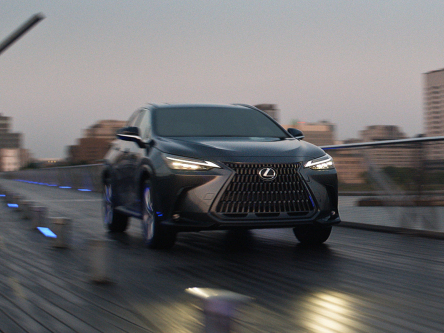
Lexus adds new sub-model 350h Luxury to NX lineup, 0-100km/h acceleration takes only 7.7 seconds
AshleyJul 28, 2025
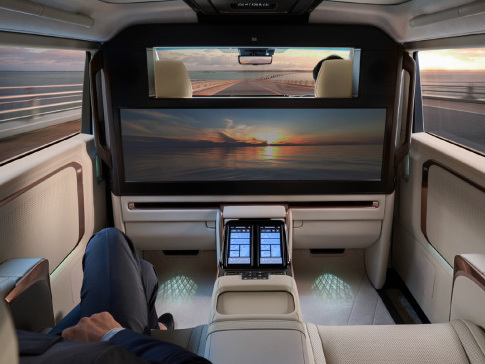
Lexus LM500h Updated in Japan with a More Luxurious Interior
JohnJul 24, 2025
View More









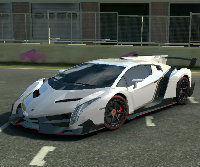


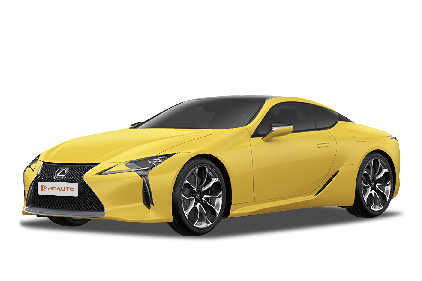
 Cars
Cars


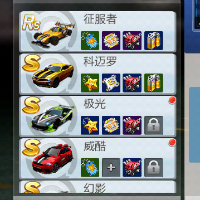
Pros
Cons